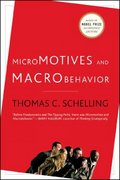Question
Question 1 a. According to the empirical rule, if the data form a bell-shaped normal distribution, _______ percent of the observations will be contained within
Question 1
a. According to the empirical rule, if the data form a "bell-shaped" normal distribution, _______ percent of the observations will be contained within 1 standard deviation around the arithmetic mean. (MCQ)
A. 68.26
B. 75.00
C. 88.89
D. 95.75
E. None of the above
b. Based on your experience what is the advantage of estimating the population mean and standard deviation with their true probabilities rather than assuming each element has the same chance of occurrence? Explain your answer.
c. Suppose that the rate of return for a particular stock during the past two years was 10% for
one of the years and 30% for the other year.
I. Compute the arithmetic and geometric rate of return per year.
II. If the expected return is 20%, which of the two return estimates in "question c (i)" approximates the expected return the most and why?
Question 2
a. Suppose you are given the value of the cumulative standardized normal distribution is 0.8770. What would be the value of Z? (MCQ)
A. 0.18
B. 0.81
C. 1.16
D. 1.47
E. None of the above
b. A data analysist wants to implement the binomial probability distribution for analysis. What assumptions of the binomial model does he need to consider?
c. A bus company determined that the number of buses it purchased per year is normally distributed, with a mean of 50 buses and a standard deviation of 12 buses.
I. What proportion of buses can be expected to purchased between 34 and 50 in a year?
II. How many buses will be purchased with at least 80 percent probability?
Step by Step Solution
There are 3 Steps involved in it
Step: 1

Get Instant Access to Expert-Tailored Solutions
See step-by-step solutions with expert insights and AI powered tools for academic success
Step: 2

Step: 3

Ace Your Homework with AI
Get the answers you need in no time with our AI-driven, step-by-step assistance
Get Started


